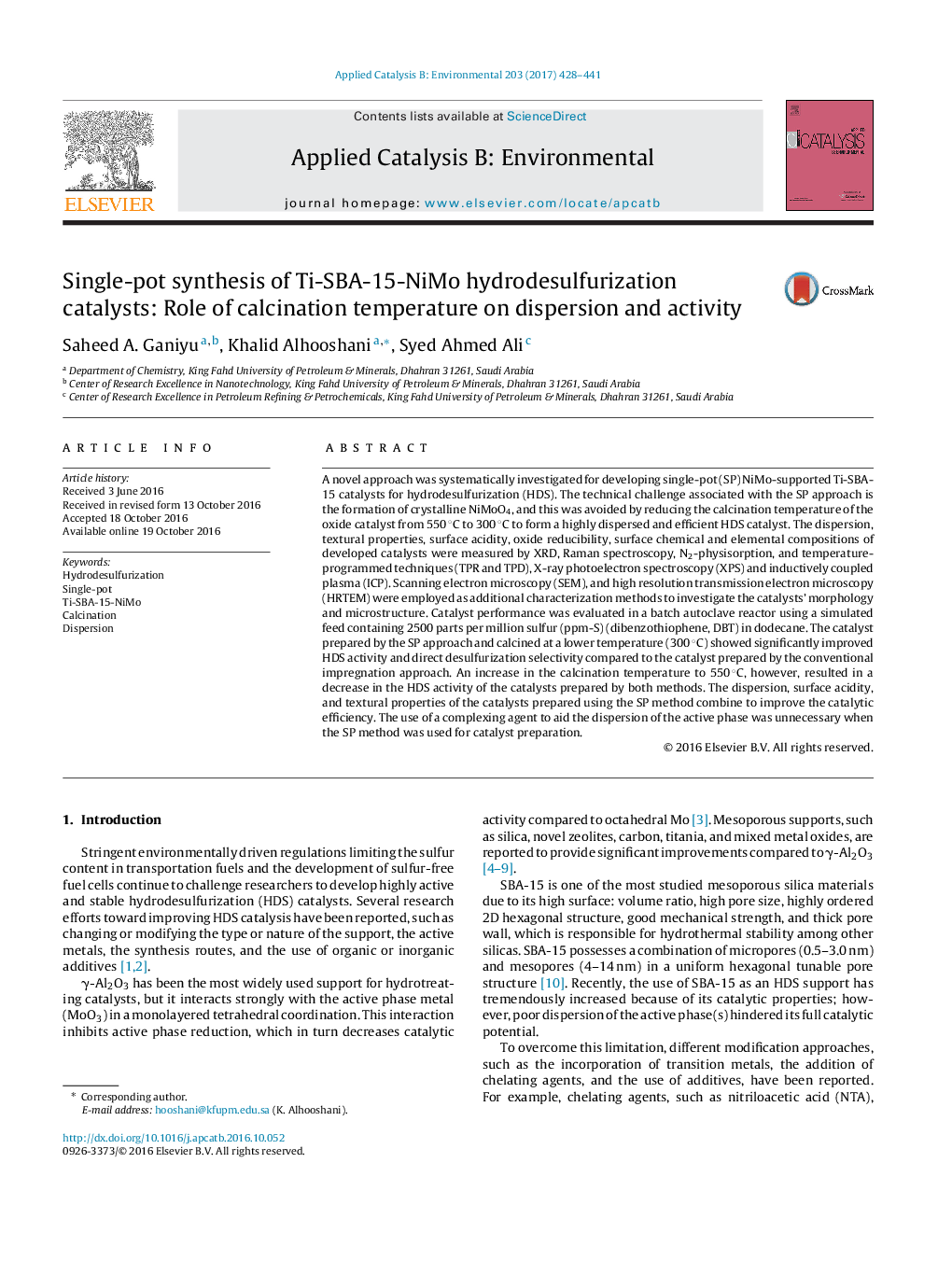| کد مقاله | کد نشریه | سال انتشار | مقاله انگلیسی | نسخه تمام متن |
|---|---|---|---|---|
| 6454491 | 1418817 | 2017 | 14 صفحه PDF | دانلود رایگان |

- A novel single-pot (SP) method to prepare NiMo-supported Ti-SBA-15 HDS catalysts was investigated.
- The SP method with calcination at 300 °C significantly improved the HDS activity and DDS selectivity.
- Improved dispersion, surface acidity, and textural properties of the catalysts prepared by the SP method combined to improve catalytic efficiency.
- The addition of a complexing agent showed little effect on the catalysts prepared by the SP method.
A novel approach was systematically investigated for developing single-pot (SP) NiMo-supported Ti-SBA-15 catalysts for hydrodesulfurization (HDS). The technical challenge associated with the SP approach is the formation of crystalline NiMoO4, and this was avoided by reducing the calcination temperature of the oxide catalyst from 550 °C to 300 °C to form a highly dispersed and efficient HDS catalyst. The dispersion, textural properties, surface acidity, oxide reducibility, surface chemical and elemental compositions of developed catalysts were measured by XRD, Raman spectroscopy, N2-physisorption, and temperature-programmed techniques (TPR and TPD), X-ray photoelectron spectroscopy (XPS) and inductively coupled plasma (ICP). Scanning electron microscopy (SEM), and high resolution transmission electron microscopy (HRTEM) were employed as additional characterization methods to investigate the catalysts' morphology and microstructure. Catalyst performance was evaluated in a batch autoclave reactor using a simulated feed containing 2500 parts per million sulfur (ppm-S) (dibenzothiophene, DBT) in dodecane. The catalyst prepared by the SP approach and calcined at a lower temperature (300 °C) showed significantly improved HDS activity and direct desulfurization selectivity compared to the catalyst prepared by the conventional impregnation approach. An increase in the calcination temperature to 550 °C, however, resulted in a decrease in the HDS activity of the catalysts prepared by both methods. The dispersion, surface acidity, and textural properties of the catalysts prepared using the SP method combine to improve the catalytic efficiency. The use of a complexing agent to aid the dispersion of the active phase was unnecessary when the SP method was used for catalyst preparation.
103
Journal: Applied Catalysis B: Environmental - Volume 203, April 2017, Pages 428-441